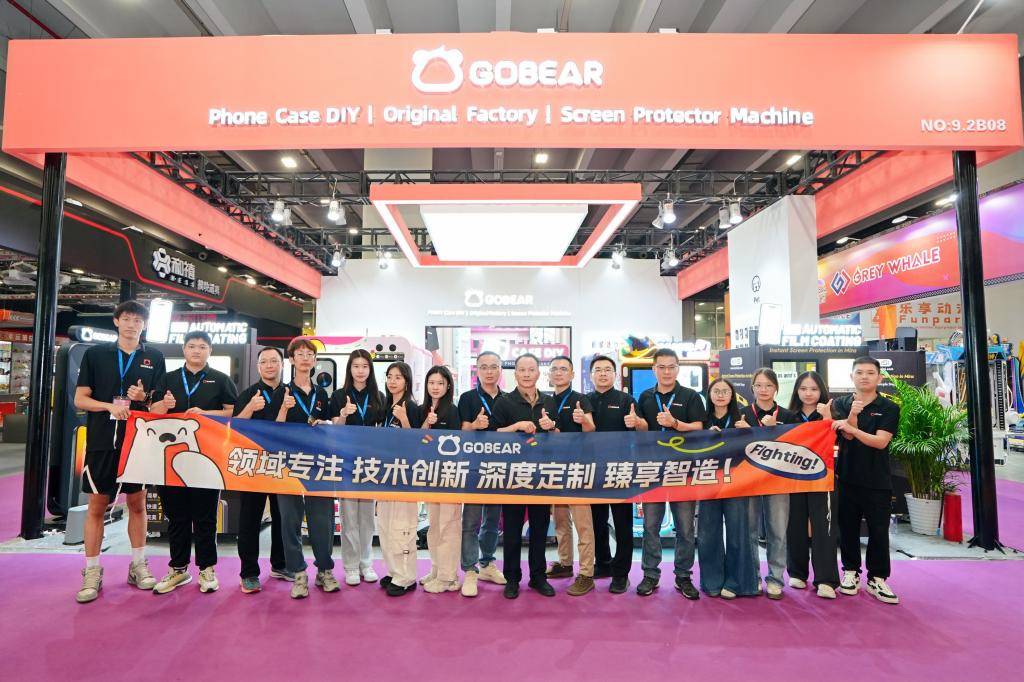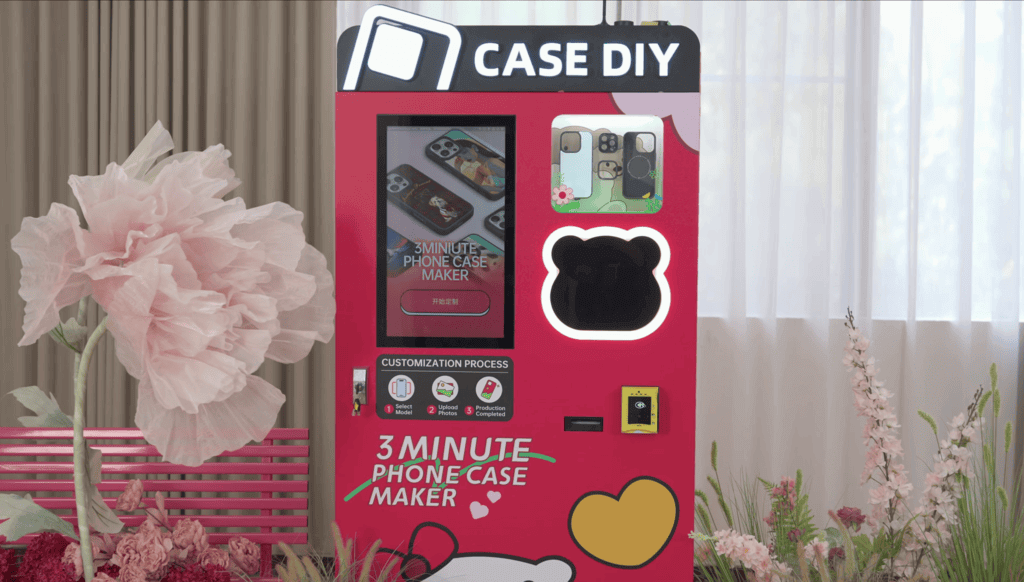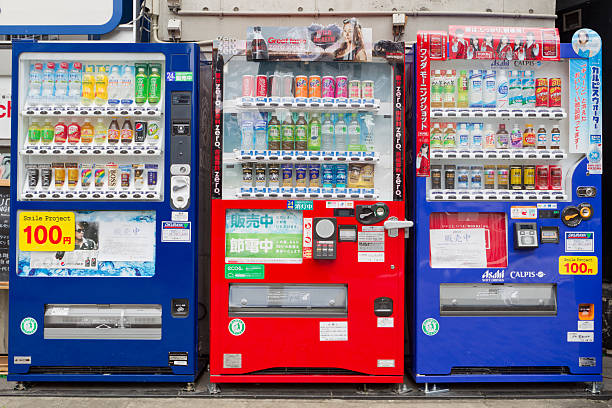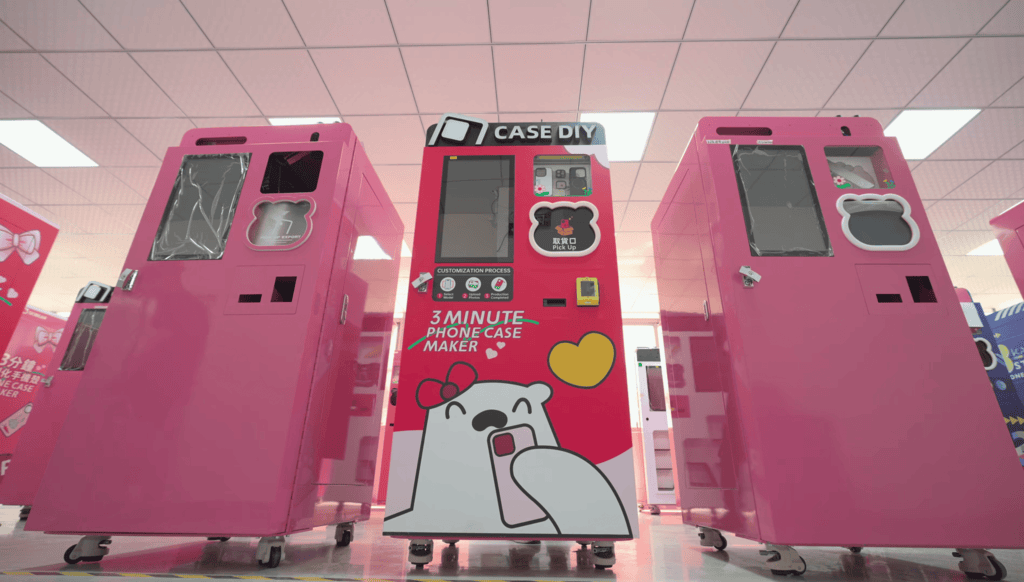How to Start A Phone Case Vending Machine Business - CaseDIY
Start a phone case vending machine business with low costs, high profits, and tips on setup, legal steps, and choosing t...
The vending machine industry is evolving faster than ever. New technologies, changing consumer habits, and cashless payment options are reshaping how operators earn. For professionals running specialized machines like phone case vending machines, understanding realistic profits in 2025 is critical.
In this article, we’ll explore expected earnings, key profitability factors, startup costs, ROI timelines, and actionable strategies to help you maximize returns and make smarter investment decisions.
CaseDIY Machine offers AI-powered vending machines that print premium personalized phone cases in about 2 minutes. With no software fees and remote management tools, your location can earn through a steady stream of high-margin sales backed by a flexible ROI model and trusted hardware.


When assessing potential profits, location remains the most decisive factor. Machines in low-traffic areas might only generate $150–$300 per month, while well-positioned units in malls, office complexes, or transit hubs can reach $800–$1,000 per month. Traffic patterns, demographics, and peak hours all influence sales, so understanding these variables is critical before investing.
The products you offer directly affect your margins. Items with higher unit costs but greater perceived value yield better profits. Similarly, machine type matters: compact units cost less but sell fewer items, whereas larger or smart machines enable dynamic pricing, promotions, and remote inventory tracking. Properly matching machine type to location can significantly improve overall revenue and reduce operational risks.
Net profit is impacted by ongoing expenses such as restocking, maintenance, and location fees. For example, monthly restocking may account for 20–30% of revenue, and preventive maintenance reduces downtime but adds fixed costs. Factoring these variables allows operators to estimate a realistic vending machine business ROI and set achievable financial targets based on actual margins rather than gross sales alone.

Several variables determine how profitable a vending machine can be. Here are the most critical ones:
Location is by far the most influential factor. Machines placed in high-traffic areas with a steady flow of customers will naturally earn more. Hospitals, office complexes, and shopping centers tend to outperform residential or low-traffic locations. The foot traffic, demographics, and spending habits of the audience all impact sales.
The items you sell directly affect profitability. Selling high-demand, high-margin products like mobile accessories or premium snack items will generate higher revenue per transaction. Machines that offer variety and convenience tend to retain customers and encourage repeat purchases.
Larger machines that hold more products can generate more revenue but require higher initial investment. Small, niche machines, like phone case vending machines, can perform exceptionally well if placed strategically. Smart machines with digital screens and inventory tracking can also boost sales by offering promotions or personalized recommendations.
Machines that accept contactless payments, credit cards, and mobile wallets see 30–50% higher transaction rates than cash-only machines. As consumer habits shift towards cashless payments, failing to equip machines with modern payment options can limit potential earnings.
Downtime directly affects revenue. Machines that frequently break down or have stock issues lose sales. Investing in robust, easy-to-maintain machines and scheduling regular maintenance checks can prevent these losses.
Starting a vending machine business requires careful planning and budgeting. Here’s a breakdown of typical costs:
In total, the initial investment for a single machine typically ranges from $4,000 to $8,000, depending on customization and technology. For those operating multiple units, scaling costs linearly is a common mistake; consider the additional management, restocking, and maintenance overhead.
CaseDIY Machine offers AI-powered vending machines that print premium personalized phone cases in about 2 minutes. With no software fees and remote management tools, your location can earn through a steady stream of high-margin sales backed by a flexible ROI model and trusted hardware.

Understanding how long it will take to see a return on your investment (ROI) is critical for planning. For a mobile phone case vending machine generating $400 net profit per month, an initial investment of $5,000 could be recovered in 12–14 months under optimal conditions. Machines in less ideal locations may take 18–24 months to break even.
Scaling intelligently is key. Here are strategies to maximize profits:
By combining these strategies, many operators see profit increases of 25–40% within the first year of scaling multiple machines.

In 2025, outdated machines limit profits. Modern vending units now include sales tracking, remote monitoring, and cashless payments. These tools show which products sell best, highlight slow movers, and let you react faster. Smart features also help you manage several machines efficiently, reducing manual work and raising profitability.
Sales data is central to stronger margins. With machine insights, you can refine product mix, adjust pricing, and restock before shortages occur. This avoids missed sales and keeps customers happy. Units that accept mobile wallets and credit cards often record 30–50% more transactions since they align with today’s payment habits.
Even advanced machines won’t profit if they’re broken or empty. Investing in preventive care and durable parts lowers downtime and future repair costs. Combine this with smart placement, inventory planning, and seasonal changes, and you’ll steadily improve vending machine business ROI. A maintained, well-placed unit can stay profitable 5–7 years, making your investment work harder.
The vending machine business in 2025 holds strong profit potential, especially with niche models like phone case vending machines. With the right location, steady upkeep, and smart use of technology, a single unit can pay for itself within a year and generate lasting income.
If you’re ready to explore the most profitable models and learn how to scale with confidence, check out CASE DIY’s vending machine solutions—a smart step toward building a vending business that grows with you.
Most machines earn $200–$800 per month, while top performers in prime spots can reach $1,000–$3,000. Your results depend on location, products, and how well you manage operations.
A new machine usually pays for itself in 12–18 months, while used machines may recover faster. After that, annual ROI often ranges between 15–40%, depending on efficiency.
Roughly 10 well-placed machines can bring in about $5,000 monthly. Larger operators managing 75–100 units often scale to six-figure annual incomes.
Airports, universities, hospitals, and transport hubs rank highest because they mix heavy traffic with limited buying alternatives. The best locations create steady, captive demand.
You can succeed alone, but expert support raises your chances dramatically. Data-driven location advice and ongoing optimization often separate profitable operators from those who struggle.
Tell us about your business goals, and our experts will provide a tailored solution and a detailed profitability report. Let's start building your new revenue stream together.